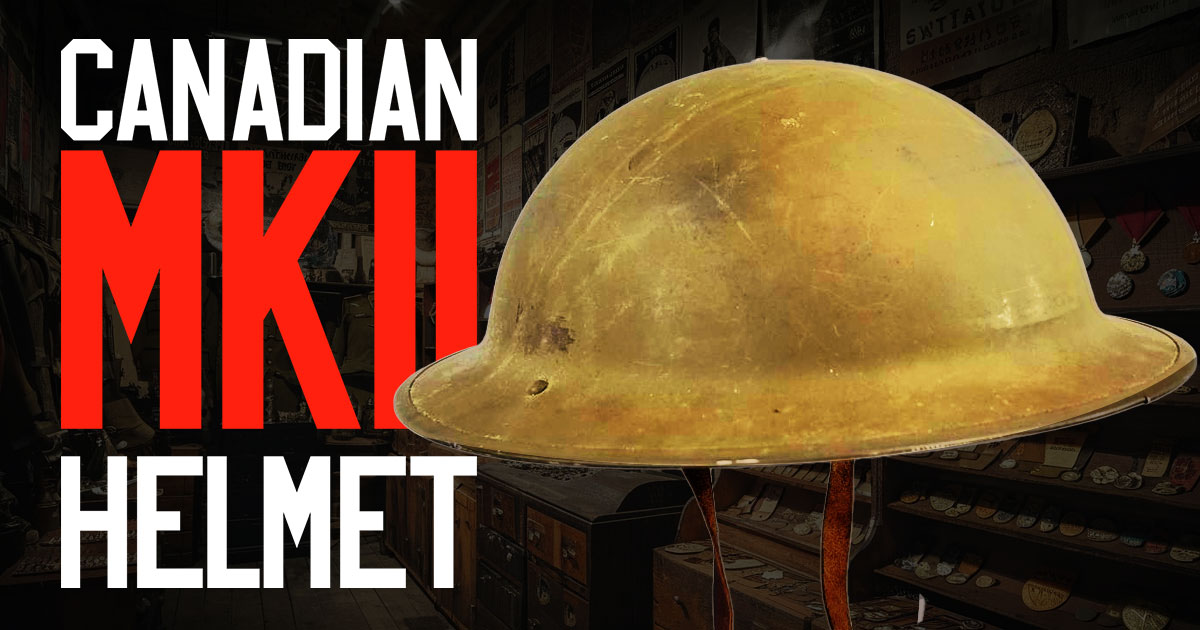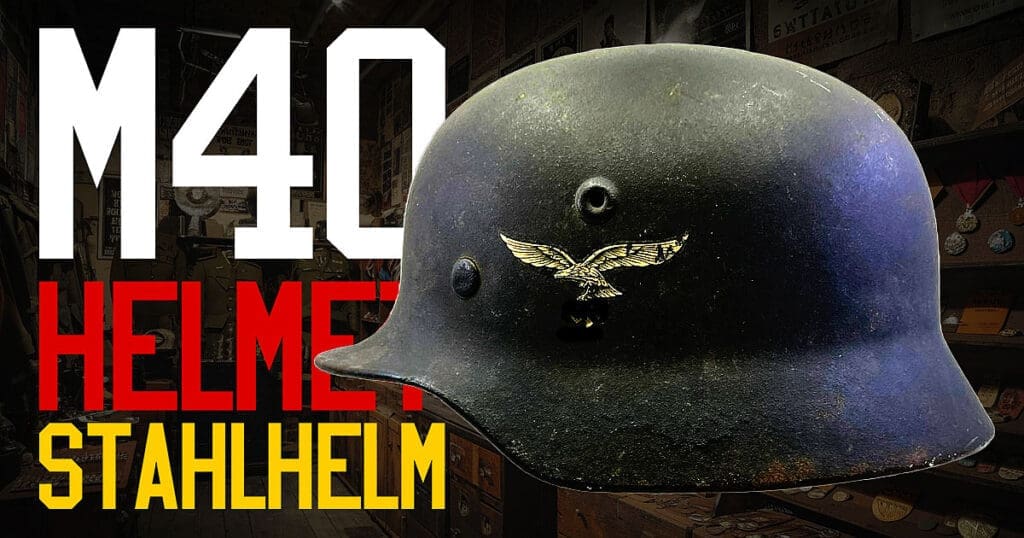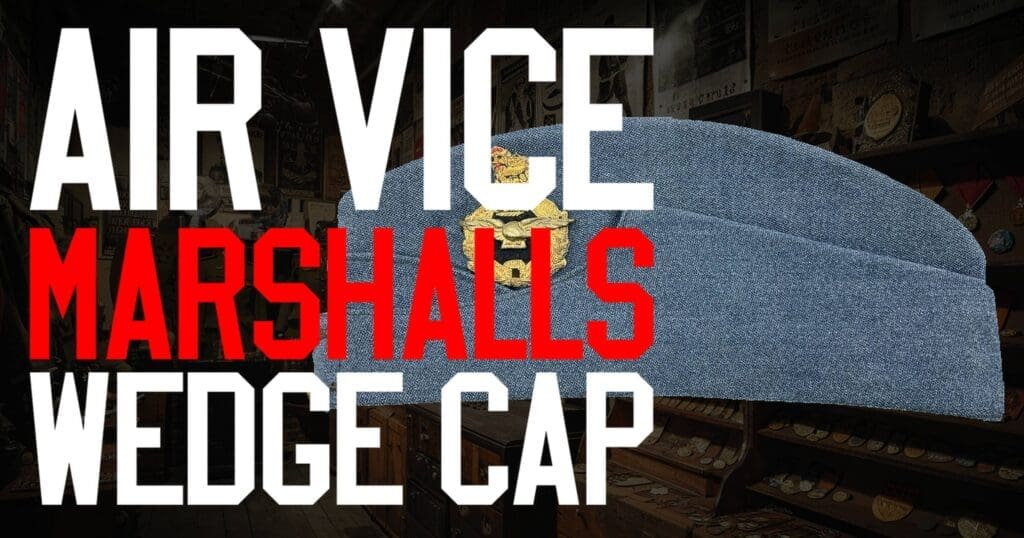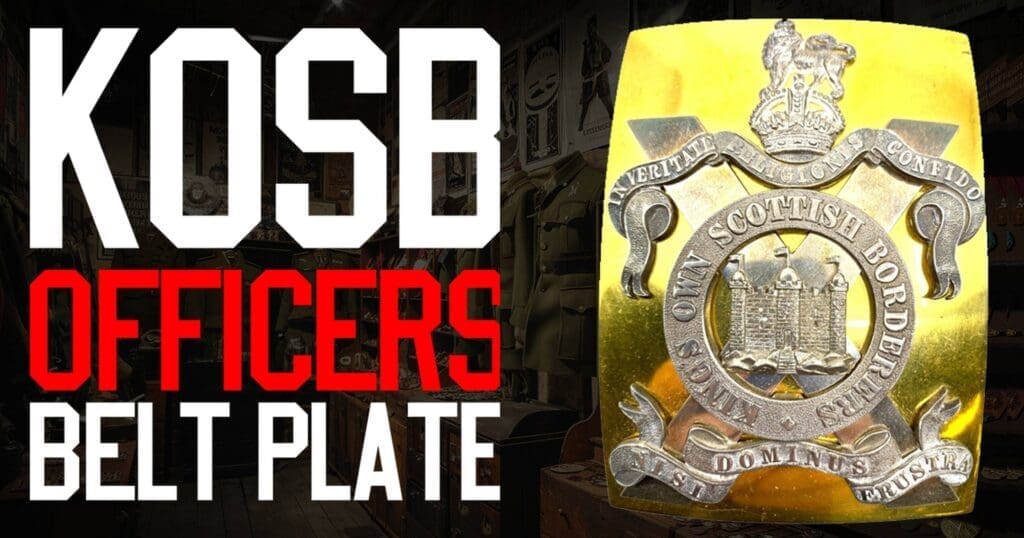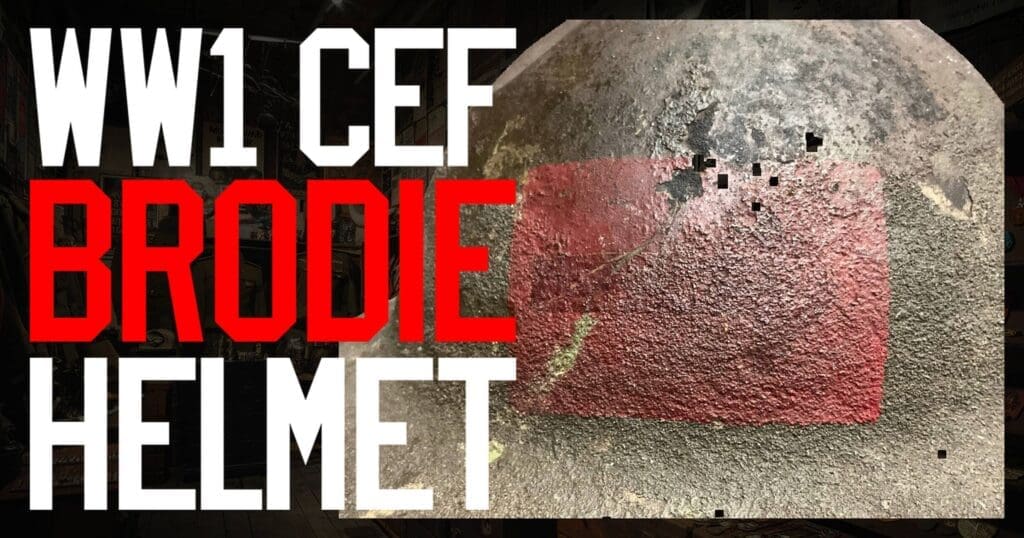The Canadian MkII Brodie helmet, a pivotal piece of military equipment, has long symbolized the resilience and bravery of soldiers during World War II. Its introduction marked a significant advancement in protective gear for Canadian forces and their allies, merging functionality with durability in ways that preceding models, such as the WWI helmets, had not achieved. This helmet not only played a crucial role in safeguarding soldiers throughout the complexities of WW2 but also became an emblem of Canadian military history. Its importance extends beyond mere protection; it is a testament to the technological and design ingenuity of the era, adapting to the harsh realities of 20th-century warfare.
As you delve into this article, you will gain a deeper understanding of the historical background that necessitated the development of the Canadian MkII helmet, and the innovations that distinguished it from the MkI, MkIII, and other world war helmets. You’ll explore its design and features that made it an indispensable wwii helmet, the intricate manufacturing process that ensured its quality, and its critical usage on the battlefields of World War II. Subsequent sections will discuss the modifications and improvements that led to the evolution of the Canadian Mk2 helmet into the Mk3 helmet, illustrating its shift from a WW2 helmet to a broader utility within and beyond military confines. By comparing it with other world war 2 helmets, you’ll appreciate its uniqueness and why it stands out not just as a piece of military equipment but as a legacy of the Canadian effort in World War II.
Historical Background
Origins of the MK II Helmet
The development of combat helmets has undergone significant transformations, with early models crafted from bronze to protect against traditional weaponry like swords and arrows. These initial helmets were heavy and poorly fitted, offering limited protection [1]. As warfare evolved, so did helmet design. By the time of World War I, helmets were primarily made from thin steel, which was lighter and provided better protection against shrapnel, though they were still inadequate against the shock waves produced by modern artillery [2].
Development and Early Usage
The shift to more effective combat helmets became pronounced during World War I due to the increased lethality of artillery. The introduction of steel helmets in Europe around 1915 marked a significant advancement in military protective gear [2]. This period also saw a surge in governmental research into helmet design, materials, and support systems, leading to the adoption of Hadfield steel for helmet construction [2].
By World War II, the need for improved protective equipment was undeniable. The Canadian Mk II Brodie helmet, introduced in 1939, was a modernization of the earlier Brodie helmet used during World War I. This helmet was initially designed to offer better protection for soldiers in trench warfare, although it proved to be less effective for mobile warfare where greater head and neck coverage was necessary [3].
In response to these challenges, the Canadian Mk II helmet underwent further modifications. Despite the introduction of newer models like the Mk III, the Mk II remained widely used due to its enhanced liner and non-magnetic steel construction, which did not interfere with navigational equipment [4]. The official procurement of the Canadian Mk II began in 1940, with significant production occurring between 1940 and 1943, highlighting its pivotal role in the Canadian military efforts during World War II [5].
Design and Features
Helmet Structure
The Canadian MkII helmet maintained a profile similar to its First World War counterpart, characterized by a relatively shallow design that provided limited coverage for the wearer’s temples and none for the crucial brain stem area. This structure, when compared to the helmets used by German forces and the contemporary American M1, seemed less robust in terms of protective coverage [6].
Materials Used
Manufactured by companies like the Canadian Motorlamp Company of Windsor, Ontario, and General Steel Wares of Toronto, the MkII helmet bodies were crafted from non-magnetic Hadfield manganese steel, noted for its combat-grade quality. The helmets featured a liner retention system that utilized a brass securing bolt and dome-style nut, modeled after the British Mk I style [5]. Additionally, the liners were made from oilcloth, fiber for the bands, and a cloth inner padded ring, enhancing comfort for the wearer [5].
Innovative Aspects
One of the distinctive features of the Canadian MkII helmet was its use of a rubber crosspiece in the crown, which was an unusual choice of material at the time. This component could appear spongy and fresh one day and then harden and crumble almost overnight, although some examples have been found in almost factory-fresh condition [6]. The helmet also included innovative two-tone netting, which left a distinctively mottled pattern on the surface of the painted steel, adding both functional and aesthetic value [6].
Manufacturing Process
Production Techniques
During World War II, the manufacturing of the Canadian MkII helmet required precise techniques to meet military specifications and durability standards. The production involved multiple stages, starting with the pressing of raw steel into helmet shapes. This was followed by trimming, heat treating for hardness, and painting for corrosion resistance and camouflage. Each helmet underwent rigorous quality checks to ensure it met the necessary protective standards [5] [7].
Factories Involved
A variety of manufacturers were involved in the production of the Canadian MkII helmets, each contributing different components and expertise. Notable among these was the Canadian Motorlamp Company of Windsor, Ontario, which produced helmet bodies marked “CL/C” from 1940 to 1943 [8]. Similarly, General Steel Wares of Toronto was active from 1940 to 1942, producing helmets stamped with “GSW” to indicate the steel batch code and the date [8]. Another significant contributor was the Aluminum Goods Company of Toronto, which primarily supplied helmets under contract for the Royal Canadian Air Force, marked as “A.G./C.” [8].
These factories were crucial in ensuring a steady supply of helmets, which were essential for the Canadian military during the critical years of World War II. The diversity of manufacturers also shows the collaborative effort across multiple sectors to support the war effort, adapting civilian industries for military production needs [8].
Usage in World War II
Role in Combat
The Canadian MkII helmet was a critical piece of equipment for Canadian forces during World War II, offering significant protection in various combat scenarios. Unlike the earlier Mark I helmet, the MkII provided enhanced coverage and was made of steel, capable of stopping shrapnel and debris from explosions, though not direct bullet impacts at close range [9]. This helmet was widely utilized by the British Empire, including Canada, and its distinct shape is often recognizable in historical photographs from the era [9].
Geographical Deployment
During World War II, the Canadian MkII helmet saw extensive use across multiple theaters of war. It was issued starting in 1940 and continued to serve Canadian soldiers until the mid-1950s [9]. The helmet’s deployment wasn’t limited to Europe; Canadian forces wearing the MkII helmet were also stationed in various regions including the Italian theatre, where helmets were sometimes painted with camouflage for added effectiveness in blending with the environment [10]. This adaptability in different geographical settings highlights the helmet’s versatility and the crucial role it played in protecting Canadian troops wherever they were deployed.
Modifications and Improvements
Changes Over Time
As you explore the evolution of combat helmets, you’ll notice that materials and designs have significantly advanced from ancient times to the present. Initially, helmets were made from materials like leather and bronze, which offered basic protection against blunt and edged weapons but were less effective against more lethal weaponry such as arrows [11]. Over centuries, the materials evolved, with steel becoming a prominent choice due to its durability and protective capabilities. By the mid-20th century, helmets like the Canadian MkII were crafted from hardened steel with manganese, capable of stopping .45 caliber pistol rounds at close range, although they still provided limited protection for the lower head and neck [11].
The modern era has seen a shift towards composite materials like Kevlar, which are not only lighter but also include features like energy-absorbing liners and fitted chinstraps for enhanced safety and comfort [1]. These developments reflect a continuous effort to improve soldier safety by integrating advanced materials and technology into helmet designs.
Impact on Soldier Safety
The primary goal of helmet modifications over the years has been to increase the safety and effectiveness of soldiers in combat scenarios. Earlier helmets, such as the M1 used during World War II, were designed to protect against shrapnel and debris but were not effective against direct gunfire [12]. Improvements in design and materials have significantly enhanced the protective capabilities of helmets, with modern versions offering resistance to higher caliber rounds and better coverage to prevent concussions and other injuries [1] [13].
Recent advancements have also focused on integrating technology with protection. For instance, the introduction of helmets that accommodate communication devices and night vision gear has drastically improved situational awareness and combat readiness [1]. Additionally, the development of helmets for specific roles, like aircrew helmets that protect against impact and noise while including built-in communication systems, showcases the tailored approach to enhancing soldier safety in diverse operational environments [1].
These modifications not only reflect the technological advancements but also the changing requirements of modern warfare, where the protection of soldiers is paramount. The ongoing research and development in helmet technology continue to push the boundaries of what is possible, ensuring that soldiers are equipped with the best possible gear to face the challenges of the battlefield [13].
Post-War Use and Legacy
Continued Military Applications
After World War II, the Canadian MkII helmet continued to see use, albeit in more specialized roles or ceremonial purposes. For example, the Chilean and Bolivian armies maintained the Stahlhelm design for their ceremonial units, showcasing the lasting impact of the helmet’s design on global military traditions [14]. Similarly, the Canadian MkII helmet variants, including those used by paratroopers and tank crews, remained in service, reflecting their effectiveness and the durability of their design [10].
Collectible Value
The Canadian MkII helmet, along with its variants such as the MkIII and the tanker helmet, has become a significant collectible item. The helmets are particularly valued for their historical significance and the unique features they possess, such as the two-tone camouflage netting and the original oilcloth scrim, which are rare and highly sought after by collectors [10]. The presence of these helmets in collections and museums not only highlights their historical value but also preserves the legacy of the soldiers who wore them during critical moments in history.
Comparisons with Other Helmets
Comparison with British MK II
The British MK2 Helmet, also known as the Brodie helmet, was initially designed by John Leopold Brody in 1915. This design underwent significant modifications to adapt to the evolving needs of warfare. By 1938, prior to World War II, the British War Office introduced enhancements to the helmet, such as a non-magnetic rim to allow soldiers to use magnetic compasses and a new liner with an improved chin strap for better fit and comfort. The MK2 version was extensively used during World War II and continued to be used by various countries for decades thereafter [15].
Comparison with Other WWII Helmets
When comparing the Canadian MkII helmet with other WWII helmets, it’s essential to consider aspects of protection and comfort. The German Stahlhelm (M35, M40, M42) offered substantial protection, covering a large portion of the head and providing some resistance against shrapnel and small arms fire. It was also noted for its comfort due to the padded leather liner and chinstrap [16].
The American M1 Helmet, recognized for its superior protection, featured a steel outer shell with a separate liner that helped in ballistic protection. It was also one of the most comfortable helmets of the era, thanks to its adjustable liner that allowed for a customized fit [16].
On the other hand, the British Brodie Helmet provided limited protection, mainly covering the top of the head, and was less comfortable due to its minimal padding and simple leather chinstrap [16].
The Soviet SSH-40 Helmet also offered good head protection with a design that covered more of the head compared to earlier Soviet helmets. Its padded liner added to the comfort, making it a favorable choice in terms of fit and protection [16].
Overall, each helmet had its unique strengths and weaknesses, with the American M1 Helmet often regarded as the best balance between comfort and protection during WWII. However, the effectiveness of a helmet also depended on factors like fit, maintenance, and battlefield conditions [16].
Conclusion
Through an in-depth exploration of the Canadian MkII helmet, its design innovations, historical significance, and enduring legacy have been brought to the forefront, encapsulating the essence of Canada’s wartime contributions and technological advancements. As we’ve seen, the helmet not only offered unparalleled protection on the battlefields of World War II but also stood as a testament to the ingenuity and resilience of those who served. Its evolution from a basic protective device to a sophisticated piece of military history illustrates the broader theme of progression in wartime technology and strategy.
Moreover, the Canadian MkII helmet’s journey from the front lines to a prized collectible underscores the lasting impact of military heritage on both historical scholarship and public memory. For those wishing to delve deeper into the fascinating world of military artifacts and their stories, further exploration can be found at Military Antiques Toronto. Preserving and understanding such artifacts not only honors the legacy of those who served but also enriches our collective memory, offering insights into the complexities and innovations of wartime history.
FAQs
1. How do the Mk1 and Mk2 helmets differ?
The Mk1 helmet, which was used starting from 1936, featured an improved liner and an elasticated, sprung webbing chin strap. This version was used until late 1940. It was then replaced by the Mk2 helmet, which had slight modifications and was utilized by British and Commonwealth forces throughout World War II.
2. What markings are typically found on Canadian Brodie helmets?
Canadian Brodie helmets often feature a red patent stamp on the liners. This stamp includes the text “BRODIE’S STEEL HELMET Registration No. WAR OFFICE PATTERN Patent No.” Significant enhancements were made to the Type A helmet in 1916, which included these markings.
3. Which helmet was considered the most effective during World War II?
The German Stahlhelm M35 was deemed the most effective helmet of World War II. Despite its high cost and complex production process, it was recognized for its superior design and reliability.
4. What was the function of helmet nets during World War II?
Helmet nets in World War II were primarily used to reduce the shine of helmets when they were wet, thereby enhancing camouflage. These nets, made from cotton herringbone twill fabric with a “forest green” and “brown coral island” pattern, allowed soldiers to add burlap scrim or natural vegetation to blend in with their surroundings better.
References
[1] – https://www.health.mil/News/Articles/2022/04/25/A-History-of-the-Combat-Helmet-and-the-Quest-to-Prevent-Injuries
[2] – https://www.ncbi.nlm.nih.gov/books/NBK224907/
[3] – https://stalingradfront.com/articles/articles-about-ww2/ww2-combat-helmets/
[4] – https://www.youtube.com/watch?v=nBy4iMGCtCI
[5] – https://www.warrelics.eu/forum/helmets/canadian-mk-ii-its-components-397580/
[6] – http://combathelmets.blogspot.com/2008/06/oh-canada-canadian-mkii-steel-helmet.html
[7] – https://www.circa1941.com/post/parish-reading-the-forgotten-helmet-manufacturer-of-wwii
[8] – https://www.warrelics.eu/forum/helmets/commonwealth-mkii-helmet-liner-manufacturers-417776/
[9] – https://www.warmuseum.ca/s3/supplyline/assets/swwteacherresources/AB1.1-Eng-Helmet.pdf
[10] – https://www.combat-relics.com/commonwealthheadgearwwii
[11] – https://www.hardheadveterans.com/pages/evolution-of-the-combat-helmet
[12] – https://www.quora.com/Is-it-true-in-World-War-2-soldiers-would-wear-their-helmets-loose-on-purpose-so-their-heads-wouldn-t-be-knocked-around-from-artillery-if-the-helmet-was-hit
[13] – https://api.army.mil/e2/c/downloads/310291.pdf
[14] – https://en.wikipedia.org/wiki/Stahlhelm
[15] – https://www.youtube.com/watch?v=DRj0PGm0Rp4
[16] – https://www.quora.com/How-do-the-combat-helmets-of-WWII-compare-in-comfort-and-protection

